September 15, 1939: The high for Minneapolis was 98 degrees Fahrenheit.
September 15, 1916: St. Paul’s earliest snow ever.
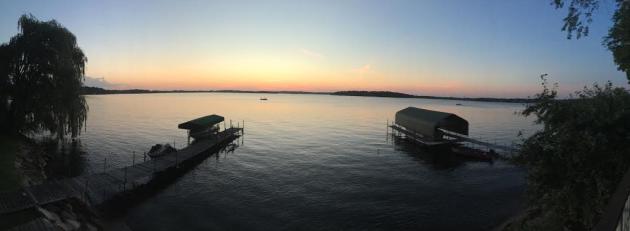
Warm Winds
Considering the sun is as high in the sky as it was back on March 27 a predicted afternoon high of 83F is nothing to sneeze at. That’s about 10 degrees F. above average. Whatever “average” is. Our weather is rarely average.
I stand corrected: meteorological summer’s average temperature in the MSP metro was 71.3F, matching the long-term historical average. In spite of a lack of sizzling heat nighttime lows were milder (a growing trend) and temperatures were right where they were supposed to be.
The Twin Cities were 2 inches wetter than average, with a slight summer rainfall deficit over the northern third of Minnesota. No biblical spring floods or “flash droughts” this year – weather whiplash was kept to a minimum.
80s spill over into Thursday, when a few thunderclaps herald the approach of a cooler front. Lingering showers may keep some football fields muddy for Friday evening games, but skies clear over the weekend with lukewarm sunshine and 70s. Good timing. What’s not to like about September?
The risk of a frost in late September has diminished; if anything I see a mild bias the next 3 weeks.
Today? A bad hair day as south winds gust over 30 mph. But a warm wind! I feel your pain…
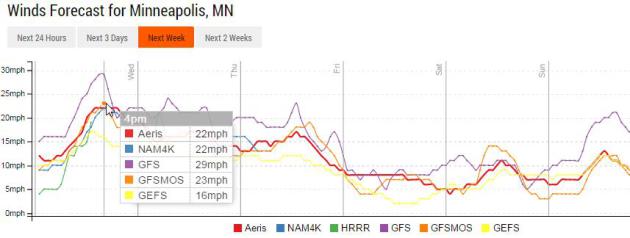
Winds Peak Today. A sharp pressure gradient setting up over the Upper Midwest will put the squeeze on the atmosphere, whipping up sustained winds of 15-30 mph, with a few higher gusts. Those winds die down to under 10 mph by next weekend. Source: NOAA and Aeris Enterprise.
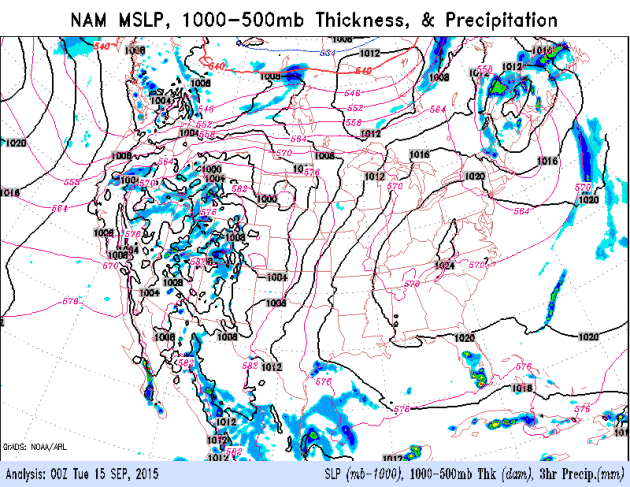
Showery Pattern – Monitoring the Gulf of Mexico. NOAA’s 84-hour NAM guidance shows scattered showers and T-storms flaring up Thursday and Friday, but skies should clear in time for another fine weekend. Meanwhile models show an area of disturbed weather pushing slowly westward across the Gulf of Mexico. The odds of tropical formation are small, but not zero.
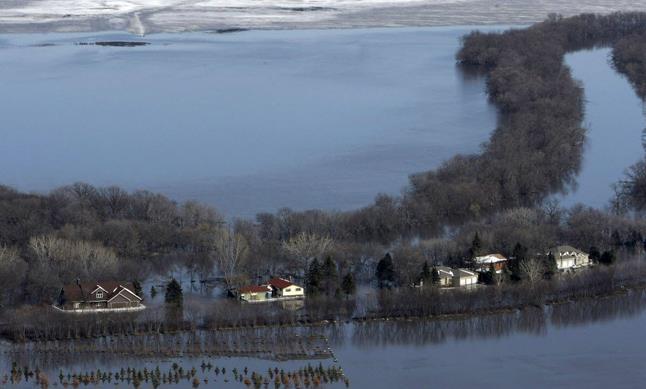
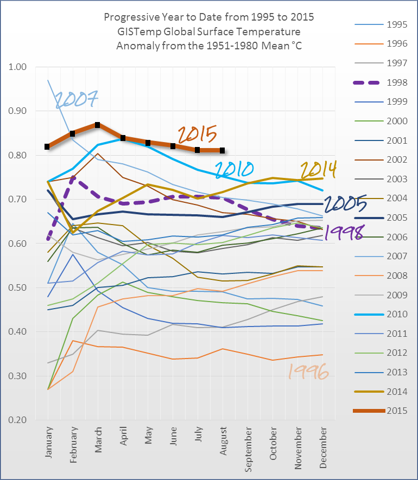
Summer 2015 Set To Be World’s Hottest Ever as U.S. Temperatures Again Soar. Here’s the intro to a story at The Guardian: “New data showing that the US had its 12th-hottest summer on record may not, at first glance, appear particularly significant or alarming. But in announcing the news, climate scientists have pointed out that, of the 11 American summers that were recorded as warmer than 2015’s, seven have occurred in the last 15 years; the other four were all during the “Dustbowl” 1930s heatwaves that plagued the US during the Great Depression. And, as part of the climate warming trend globally, next Thursday a federal agency is set to announce the latest worldwide figures that are likely to show that it was officially the hottest summer ever recorded on the planet, and the hottest first eight months of the year to date…”
Graphic credit and more details: hotwhopper.com.

Hottest August, Worldwide, Since 1891. Here’s an excerpt from the Japan Meteorological Agency: “The monthly anomaly of the global average surface temperature in August 2015 (i.e. the average of the near-surface air temperature over land and the SST) was +0.45°C above the 1981-2010 average (+0.79°C above the 20th century average), and was the warmest since 1891. On a longer time scale, global average surface temperatures have risen at a rate of about 0.65°C per century...”

West Coast Residents Caught In A Line of Fire From California to Washington. The Washington Post reports; here’s an excerpt: “…With more than a month remaining in the Western fire season, which starts each year in June, nearly 600,000 acres have burned in California. Four firefighters in northern California were hospitalized with burns Saturday as hundreds fled wildfires, the Associated Press reported. Washington is setting a record, with 990,000 scorched acres. And Oregon is on pace to match one of its worse seasons ever, with nearly 1 million acres burned. Nationwide, more than 7 million acres have burned so far this year; the record is nearly 10 million in 2006. Fires in the Alaskan wilderness account for at least 5 million of the acres that have burned this year…”
Photo credit above: “Flames continue to burn near gas lines at a destroyed apartment complex Sunday, Sept. 13, 2015, in Middletown , Calif. California Gov. Jerry Brown has declared a state of emergency in Lake and Napa Counties after a wildfire charred more than 60 square miles within 12 hours, prompting thousands to flee their homes. Brown said Sunday the declaration will expedite debris removal and waive fees to people who need to replace official documents lost in the fire. The blaze, about 100 miles north of San Francisco, has destroyed an unconfirmed number of homes and other buildings and damaged highways and other infrastructure.” (AP Photo/Eric Risberg)

More Than 100,000 Acres of Northern California Are On Fire. Here’s a clip from an update at Quartz: “…The fires are spreading faster than I have seen in my 30 years,” said Mark Ghilarducci, director of the Governor’s Office of Emergency Services, on Sunday in Calaveras County, scene of the massive Butte Fire that has burned more than 80 homes. “The bushes, the trees have absolutely no moisture in them, and the humidities are so low that we are seeing these ‘fire starts’ just erupt into conflagrations…”
Photo credit above: “A house burns as the Butte Fire rages through Mountain Ranch, California.” (Reuters/Noah Berger)
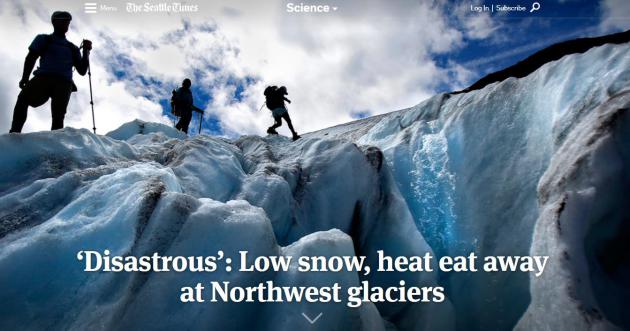
“Disastrous”: Low Snow, Heat Eat Away at Northwest Glaciers. Here’s the introduction to a story at The Seattle Times: “In more than three decades of field work, Mauri Pelto has taken the measure of Washington’s glaciers during seasons of record-breaking snow and years that broke skiers’ hearts. But he’s never seen anything like this summer. “The best word for it is disastrous,” said Pelto, who recently wrapped up his annual survey in the North Cascades. On mountain after mountain, he and his team encountered bare ice and gushing meltwater on glaciers that would normally be blanketed with snow. On average, Pelto estimates glaciers across the rugged mountain range will lose 5 to 10 percent of their volume before the summer is over…”


4 Reasons Why El Nino Won’t Solve California’s Epic Drought. Here’s a snippet from a story at EcoWatch: “…But there’s another reason why El Nino and any subsequent heavy rain years won’t fix California’s water crisis: We don’t maximize the water we already have. Whenever it rains in California, much of that water is funneled directly into the Pacific Ocean rather than being captured and used. The amount of water being lost is staggering—a one-inch rain event in Los Angeles County can generate more than 10 billion gallons of stormwater runoff, most of which ends up in the ocean. That’s enough water to fill the Rose Bowl over 100 times! Also, large volumes of treated water are dumped out to sea. For instance the Hyperion Treatment Plant in Los Angeles discharges more than 250 million gallons of wastewater each day into the Pacific Ocean. Instead, this water could be additionally treated and reused...”
Photo credit above: “This Sept. 3, 2015 photo shows a dried-out lawn at Los Angeles City Hall, with a sign explaining that irrigation has been shut off due to the ongoing drought“. (AP Photo/Nick Ut).
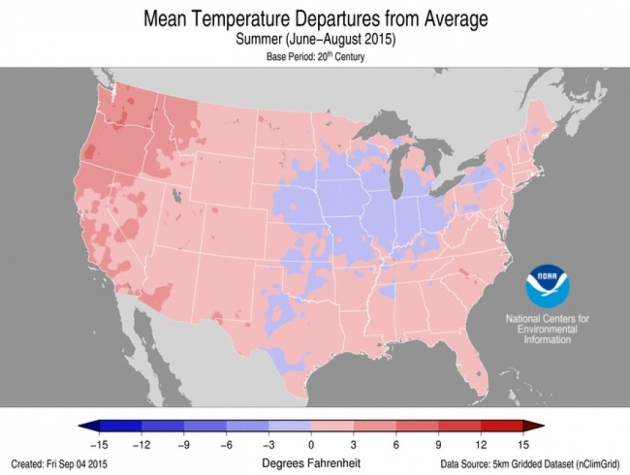
4 Western States Could See Warmest Year on Record. Here’s a clip from Climate Central that made me do a double-take: “…Except for a relatively cool oasis at the center of the country (created by copious rainfall that helped keep temperatures down), most of the country had above-normal temperatures for August, as well as the summer as a whole. In particular, parts of New England, Hawaii and the Southern Plains roasted in sometimes-record heat during the month. Two western states — Washington and Oregon — had their hottest summers on record, driven in part by stifling August weather. Those two states, along with California and Nevada have recorded their warmest January-August, and are poised to potentially see their hottest years ever...”
Image credit above: “How temperatures departed from average during summer 2015 for the contiguous U.S.” Credit: NOAA
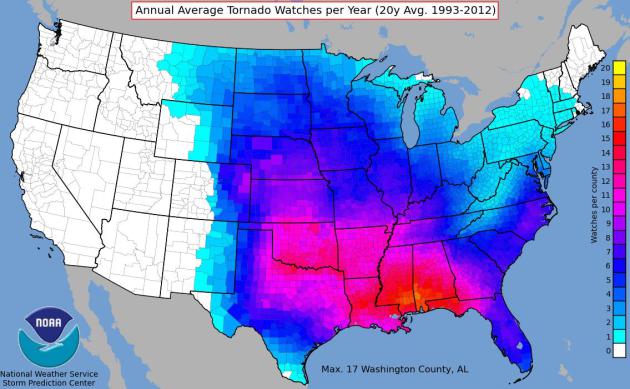
New Model Could Provide Tornado Forecasts Months in Advance. Good luck with that. We may be able to forecast, with some vague skill, when conditions are ripe for tornado formation, weeks or even months in advance, but I’m a bit skeptical on this one. Here’s an excerpt from Business Standard: “A new model for predicting tornado activity could allow experts to prepare forecasts months or even seasons in advance, scientists say. “The aim is to predict ahead to the following year or subsequent years about whether we’ll get above or below average tornado activity in a given area,” said Vincent Cheng, a postdoctoral fellow in University of Toronto Scarborough (UTSC) Ecological Modelling Lab...”
Graphic credit: NOAA Storm Prediction Center.

What’s The Prediction for Hurricane Forecasting? Predictions are improving over time, especially track forecasts. Intensity remains problematic. Here’s a clip from a story at The Charlotte Observer: “…Improvements in observation systems – especially in research aircraft – and more sophisticated data for projections have been prominent. “There are NASA satellite sensors with much higher spatial resolution today as compared to 2005,” said Venkat Lakshmi, a professor and hydrometeorology expert at the University of South Carolina. Also, “input into numerical models, the boundary layer and initial conditions has improved, making predictions much better. As a matter of fact, now we have five-day forecasts as compared to three-day forecasts in 2005...”
* The 2014 National Hurricane Center Verification Report is here.

Virtual Sunlight – On Demand. An Italian company called CoeLux is offering a supernaturally realistic sky, complete with artificial sunshine at the flick of a switch, courtesy of nanotechnology. Very cool. SAD (seasonal affective disorder) sufferers take note. No idea how much it costs, but I need one of these. Here’s an excerpt: “CoeLux is an optical system based on nano technology to artificially reproduce the natural light and visual appearance of the sun and sky. CoeLux offers a breakthrough opportunity for indoor architecture by creating the sensation of infinite space.”
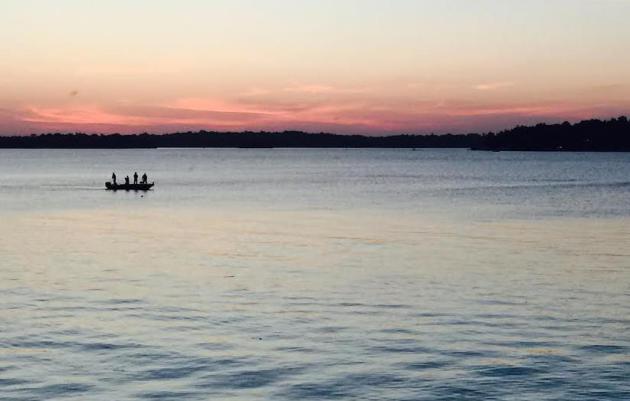
TODAY: Sunny, gusty winds. Winds: S 20-30. High: 83
TUESDAY NIGHT: Partly cloudy and mild for late September. Low: 67
WEDNESDAY: Less sun, stray T-shower? Winds: S 15-25. High: 84
THURSDAY: Better chance of T-storms, some heavy. Wake-up: 69. High: 81
FRIDAY: Unsettled, PM showers. Wake-up: 61. High: 75
SATURDAY: Partly sunny, very pleasant. Wake-up: 57. High: 75
SUNDAY: Sunny and milder. Wake-up: 58. High: 78
MONDAY: Break out the shorts! Warm sunshine. Wake-up: 59. High: near 80
Climate Stories….
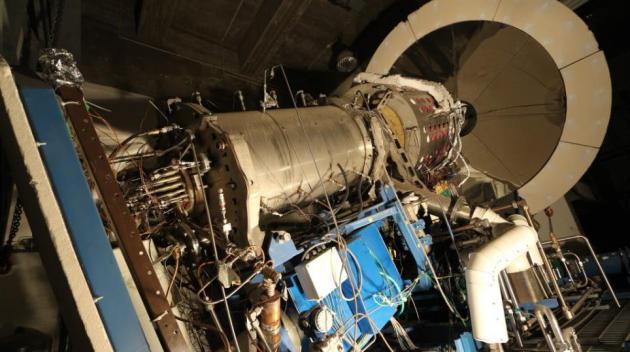

How Cheap Can Solar Get? Very Cheap Indeed. I was encouraged to read up on the trends (solar voltaic prices are in a free fall, falling even faster than the price of crude oil it seems). Here’s an excerpt from German Energy Transition: “…And beyond that, by the time solar scale has doubled 4 more times, to the equivalent of 16% of today’s electricity demand (and somewhat less of future demand), we should see solar at 3 cents per kwh in the sunniest areas, and 4.5 cents per kwh in moderately sunny areas. If this holds, solar will cost less than half what new coal or natural gas electricity cost, even without factoring in the cost of air pollution and carbon pollution emitted by fossil fuel power plants…”
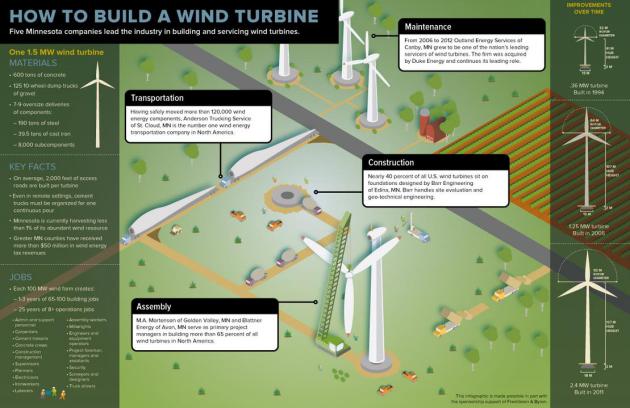
Job Creator. How many people benefit from a single wind farm going up in Minnesota? More than you might imagine. Click here to see a larger infographic, courtesy of Fresh Energy.
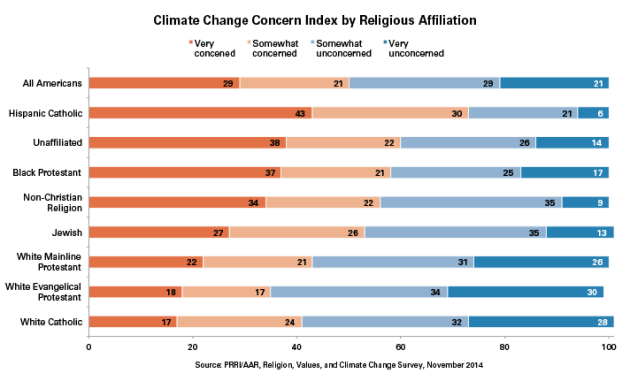
Religion and Climate Change – Can You Talk About Both? Absolutely. Stewardship and Creation Care are central to climate change; protecting God’s gift. Here’s an excerpt of a story from Alaska Public Media: “…Any person who has a devotion to God in any form should think of the Earth as a creation that needs to be protected, needs to be cared for in a proper way,” said panelist Orthodox Bishop David Mahaffey. “So as a human being who knows and loves a creator God, I feel it’s my role to be involved in these things.” The Bishop said he incorporates protection of the environment in his daily life and sacraments. For him and many of the other speakers at the conference, faith and environmental protection are not just linked; they are inextricably tied together...”

Did Global Warming Play a Role in Japan’s Devastating Floods? A warmer, wetter atmosphere may be juicing all storms now, making extreme events even more extreme, especially rainfall rates and totals. Here’s an excerpt from New Scientist: “…While El Niño boosts the number of major hurricanes – as Kilo was at times during its three-week trek across the Pacific – it decreases the number of weak storms, like Etau. So it is not possible to say if El Niño and global warming played any part, McNoldy thinks. “It was just a meteorological set-up that favoured an extended period of heavy rain over a relatively small region.” But Masters thinks climate change may have made the rainfall more severe, because warmer waters increase the amount of moisture in the air and thus amplify rainfall during storms. “All of this unfolded in an atmosphere ‘juiced’ because of global warming, here in our warmest year for the planet on record…”
File photo credit above: “Houses are submerged in water flooded from the Kinugawa River, right bottom, in Joso, Ibaraki prefecture, northeast of Tokyo Thursday, Sept. 10, 2015. As heavy rain pummeled Japan for a second straight day, the river broke through a flood berm, sending a wall of water into Joso, about 50 kilometers (30 miles) northeast of Japan’s capital.” (Kyodo News via AP)

Google Maps Now Shows if Climate Change Will Put Your Home Underwater. Lovely. Here’s an excerpt from Google’s Tech.Mic: “On our hottest and coldest days, we joke and whine about climate change and the terrible weather. But in 2015, we’re lucky that we don’t have to see the true effects of what might be ahead of us after global temperatures rise. That’s why this version of Google Maps is an eye-opener. On Friday afternoon, Google Maps started showing what coastal L.A. would look like after a few feet of rising sea levels. The changes show up in neighborhoods like Malibu and Santa Monica…”


The Refugee Crisis is a Portent. A fluke or a sign of things to come as climate refugees flee regions hit by perpetual drought and water shortages? We’ll see. Here’s a clip from Daily Kos: “…In 2011, the National Oceanic and Atmospheric Administration reported that climate change was “a major factor in more frequent Mediterranean droughts.” By 2013, researchers were linking the drought in Syria to its civil war. A year ago, the Emmy Award-winning documentary Years Of Living Dangerously further fleshed out the link between climate change and the war in Syria, as well as growing violence over increasing water scarcity in Yemen. Last spring, a peer-reviewed scientific study explicitly linked the Syrian war to climate change:
“It’s a pretty convincing climate fingerprint,” said Retired Navy Rear Adm. David Titley, a meteorologist who’s now a professor at Penn State University. After decades of poor water policy, “there was no resilience left in the system.” Titley says, given that context, that the record-setting drought caused Syria to “break catastrophically...”

The “Fat Tail” of Climate Change Risk. Here’s an excerpt of a story at Huffington Post: “…The “insurance policy” analogy is appropriate here. We don’t purchase fire insurance on our homes because our homes are likely to burn down. Far from it in fact: less than one-in-four homeowners are likely to ever experience a house fire. We purchase fire insurance because we understand that, even though such a catastrophic event is unlikely (less than 25 percent chance of happening), if it did happen, it would be catastrophic. So it is worth hedging against, by investing money now — in the form of fire insurance…”

